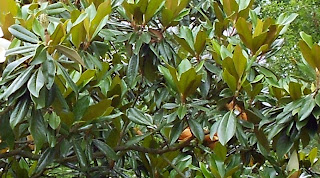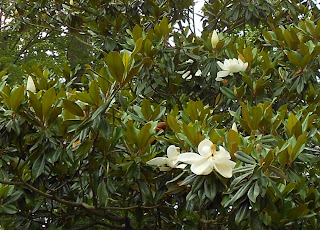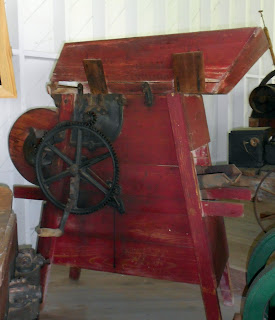There was once a small white frame house.
It was not the kind of house that would garner much attention these days.
Not many windows. No garage.
Not large enough for the family living in it to have their own private spaces.
No open floor plan.
Likely no gleaming modern kitchen.
Doubtful there was central air to cool its interior during steamy Tidewater summers
Probably less chance it stayed warm during damp and chilly Tidewater winters.
Except this little cottage had one thing no other house had: pink shutters.
But not only pink shutters framing the windows;
there was also a pink-flowering mimosa tree blooming in the front lawn.

Someone loved that worn little home.
The splashes of pink paint
that were carefully coordinated to the mimosa's pink blossoms
revealed a commitment to artistic sensibility in the face of limited means.
That and confidence in one's own taste, I would say.

And once seeing a mimosa's fine leaves and delicate flower puffs,
who could not understand this homeowner's painterly homage to mimosa pink?
The leaves themselves convey a certain sensitivity.
They are open in daylight,

Pink shutters. Pink mimosa blossoms.
It makes perfect sense.
<>
there was also a pink-flowering mimosa tree blooming in the front lawn.

Someone loved that worn little home.
The splashes of pink paint
that were carefully coordinated to the mimosa's pink blossoms
revealed a commitment to artistic sensibility in the face of limited means.
That and confidence in one's own taste, I would say.

And once seeing a mimosa's fine leaves and delicate flower puffs,
who could not understand this homeowner's painterly homage to mimosa pink?
The leaves themselves convey a certain sensitivity.
They are open in daylight,
but close up towards dusk.
Pink shutters. Pink mimosa blossoms.
It makes perfect sense.
<>



.jpg)
.jpg)
.jpg)
.jpg)




















.jpg)










